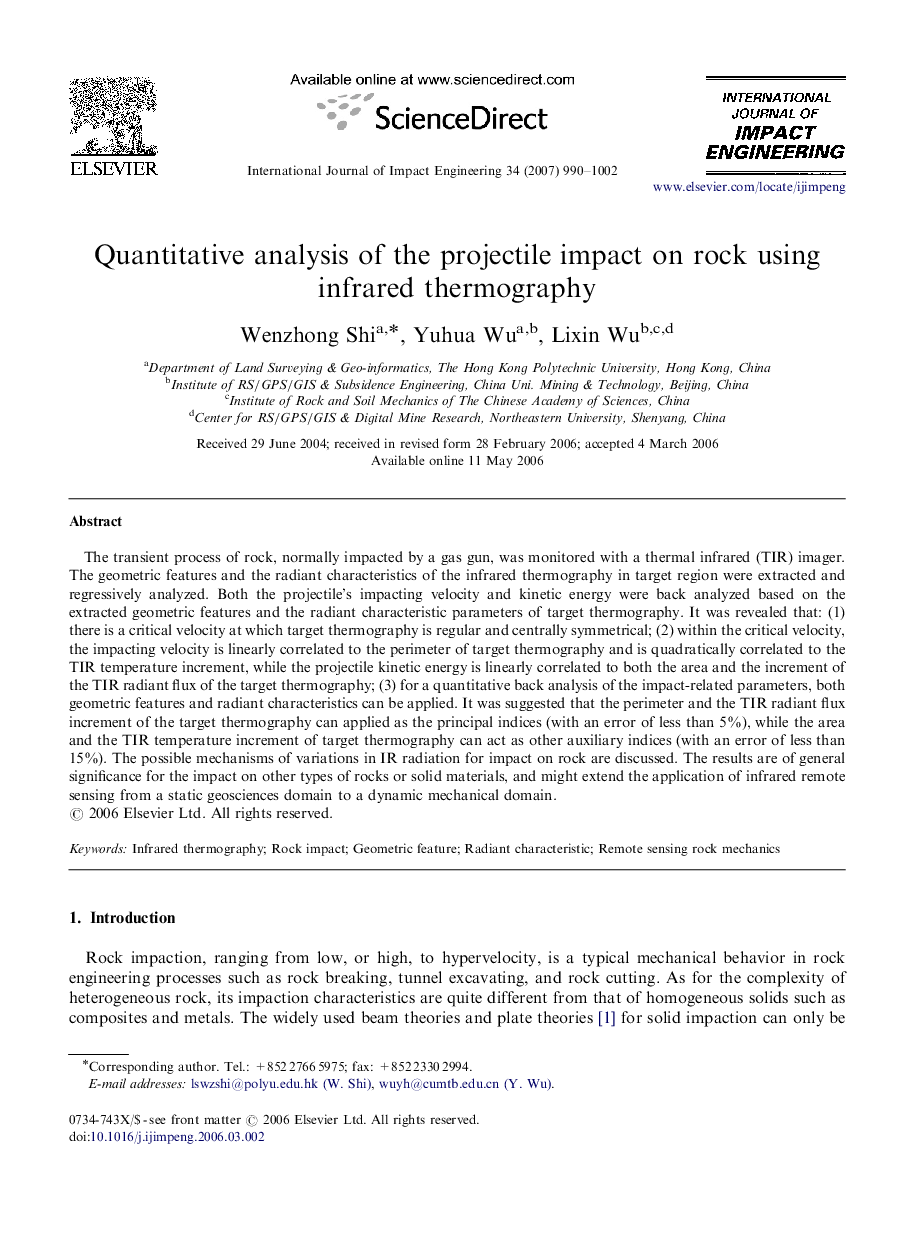| Article ID | Journal | Published Year | Pages | File Type |
|---|---|---|---|---|
| 777297 | International Journal of Impact Engineering | 2007 | 13 Pages |
The transient process of rock, normally impacted by a gas gun, was monitored with a thermal infrared (TIR) imager. The geometric features and the radiant characteristics of the infrared thermography in target region were extracted and regressively analyzed. Both the projectile's impacting velocity and kinetic energy were back analyzed based on the extracted geometric features and the radiant characteristic parameters of target thermography. It was revealed that: (1) there is a critical velocity at which target thermography is regular and centrally symmetrical; (2) within the critical velocity, the impacting velocity is linearly correlated to the perimeter of target thermography and is quadratically correlated to the TIR temperature increment, while the projectile kinetic energy is linearly correlated to both the area and the increment of the TIR radiant flux of the target thermography; (3) for a quantitative back analysis of the impact-related parameters, both geometric features and radiant characteristics can be applied. It was suggested that the perimeter and the TIR radiant flux increment of the target thermography can applied as the principal indices (with an error of less than 5%), while the area and the TIR temperature increment of target thermography can act as other auxiliary indices (with an error of less than 15%). The possible mechanisms of variations in IR radiation for impact on rock are discussed. The results are of general significance for the impact on other types of rocks or solid materials, and might extend the application of infrared remote sensing from a static geosciences domain to a dynamic mechanical domain.
